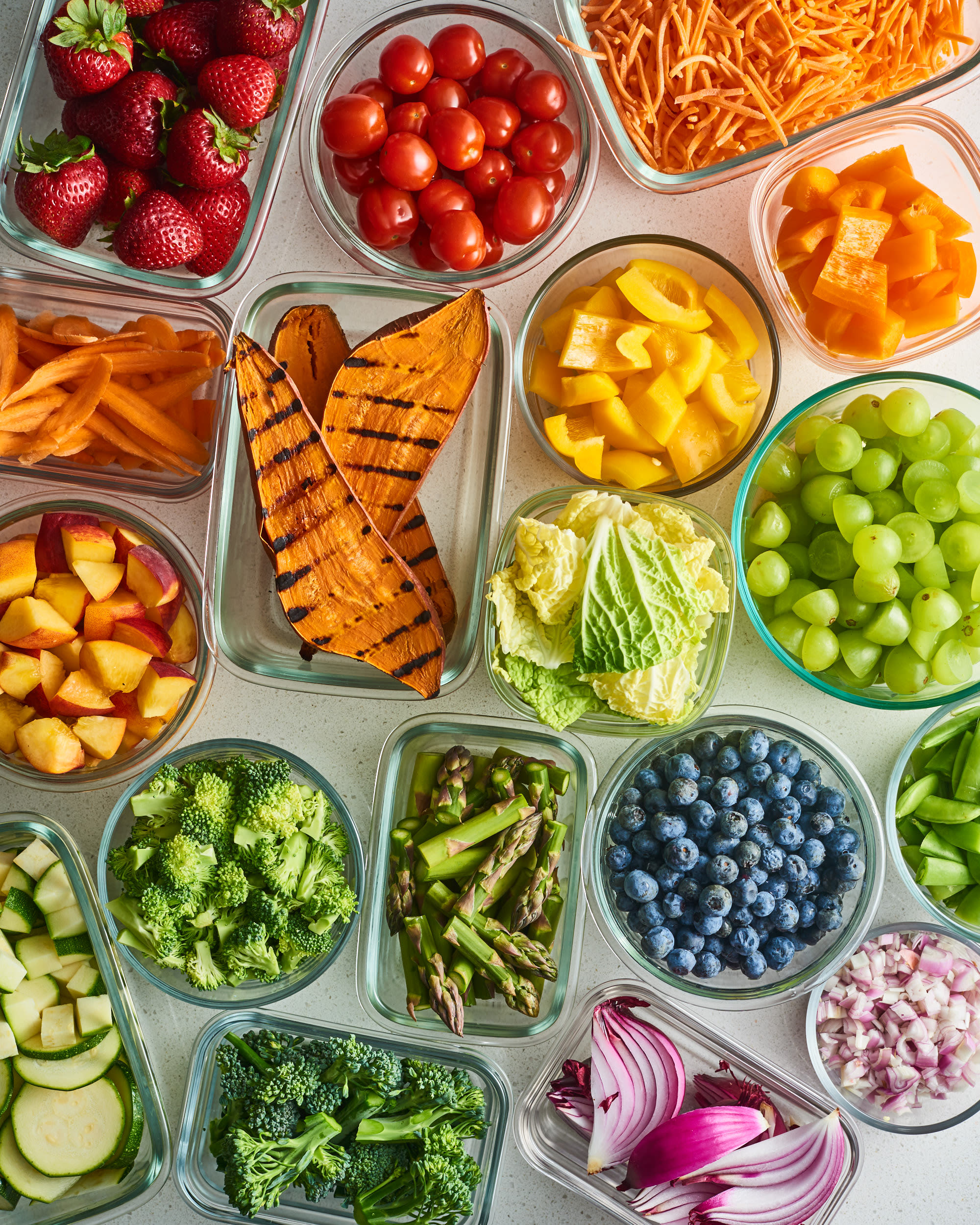How to Encourage Kids to Eat Vegetables: Expert-Backed Strategies for Success
How to Encourage Kids to Eat Vegetables: Expert-Backed Strategies for Success

Getting children to eat vegetables remains one of the most universal parenting challenges. Despite knowing the crucial role vegetables play in healthy development, many parents find themselves in daily battles over broccoli, negotiations about carrots, and creative disguises for leafy greens. The good news is that recent research in 2025 has revealed innovative, science-backed strategies that make encouraging kids to eat vegetables not only possible but enjoyable for the whole family.
Current pediatric nutrition studies emphasize that successful vegetable consumption in children requires understanding the psychological, developmental, and sensory factors that influence food preferences. Rather than relying on force or bribes, today's most effective approaches focus on positive exposure, environmental modifications, and child-centered strategies that respect individual differences while building lifelong healthy eating habits.
Understanding Why Children Resist Vegetables
To effectively encourage kids to eat vegetables, we must first understand the complex reasons behind their resistance. Children's food preferences are shaped by biological, psychological, and environmental factors that create natural barriers to vegetable acceptance.

Evolutionary and Biological Factors
Children's natural tendency to reject vegetables has evolutionary roots designed to protect them from potentially harmful plants. This biological safety mechanism, called neophobia, makes children inherently suspicious of bitter tastes and strong flavors commonly found in vegetables. Additionally, children have more taste buds than adults, making them more sensitive to bitter compounds naturally present in many nutritious vegetables.
- Heightened taste sensitivity: Children can taste bitter compounds in vegetables more intensely than adults
- Natural neophobia: Evolutionary protection against potentially toxic plants creates initial vegetable rejection
- Preference for sweetness: Innate attraction to sweet tastes provides energy for rapid growth and development
- Texture sensitivities: Developing sensory systems may find certain vegetable textures overwhelming or unpleasant
Psychological and Developmental Influences
Beyond biology, psychological factors significantly impact children's willingness to try and enjoy vegetables. Understanding these mental and emotional aspects helps parents develop more effective strategies.
- Autonomy development: Toddlers and preschoolers assert independence by controlling food choices
- Previous negative experiences: Bad memories associated with forced eating or punishment create lasting food aversions
- Attention-seeking behavior: Food refusal becomes a way to gain parental attention and control
- Sensory processing differences: Some children have heightened sensitivities that make certain foods genuinely difficult to tolerate
The Critical Importance of Vegetables in Child Development

Vegetables provide essential nutrients that support every aspect of childhood development, from physical growth to cognitive function. Understanding these benefits helps parents maintain motivation during challenging periods and reinforces the importance of persistence in encouraging vegetable consumption.
Physical Health Benefits
- Immune system support: Vitamins A, C, and E in vegetables strengthen disease resistance and healing
- Digestive health: Fiber promotes healthy gut bacteria and prevents constipation common in children
- Bone development: Calcium, magnesium, and vitamin K support strong skeletal growth
- Cardiovascular foundation: Potassium and antioxidants establish healthy blood pressure patterns
- Weight management: Low-calorie, high-nutrient vegetables support healthy growth patterns
Cognitive and Academic Performance
Recent research demonstrates strong connections between vegetable consumption and brain function in children:
- Improved concentration: Steady blood sugar from fiber-rich vegetables enhances focus in school
- Memory development: Antioxidants protect developing brain cells and support learning
- Mood regulation: B-vitamins and minerals support neurotransmitter production for emotional stability
- Academic achievement: Studies link adequate vegetable intake with higher test scores and better classroom behavior
Research-Based Strategies to Encourage Vegetable Consumption

Current research in pediatric nutrition has identified several evidence-based approaches that significantly increase children's willingness to try and enjoy vegetables. These strategies work by addressing the underlying psychological and sensory barriers while creating positive associations with vegetable consumption.
The Power of Repeated Exposure
One of the most powerful tools for encouraging kids to eat vegetables is simply repeated exposure without pressure. Research shows that children often need 8-15 exposures to a new food before they're willing to try it, and even more before they develop a preference.
- No-pressure presentation: Place small amounts of vegetables on plates without requiring consumption
- Multiple preparation methods: Offer the same vegetable raw, roasted, steamed, and in different combinations
- Consistent availability: Keep vegetables visible and accessible during meals and snacks
- Family-style serving: Allow children to serve themselves from communal vegetable dishes
Environmental and Social Influences
The eating environment significantly impacts children's willingness to try vegetables. Creating positive, pressure-free atmospheres encourages exploration and acceptance.
- Family modeling: Children are more likely to eat vegetables when they see parents and siblings enjoying them regularly
- Peer influence: Eating vegetables becomes more appealing when friends and classmates do the same
- Positive mealtime atmosphere: Relaxed, conversation-filled meals create pleasant associations with all foods
- Elimination of distractions: Focused eating without screens allows children to appreciate food flavors and textures
Creative Presentation and Preparation Techniques

How vegetables are prepared and presented dramatically influences children's willingness to try them. Research-backed presentation strategies can transform rejected vegetables into appealing, kid-friendly foods.
Visual Appeal and Fun Factor
- Rainbow presentations: Arrange vegetables by color to create visually stunning, Instagram-worthy plates
- Fun shapes and characters: Use cookie cutters to create vegetable shapes or arrange vegetables into faces and animals
- Dips and sauces: Offer appealing, healthy dips like hummus, yogurt-based dressings, or mild salsa
- Size considerations: Cut vegetables into child-friendly, bite-sized pieces that are easy to handle
- Interactive elements: Create vegetable kabobs, build-your-own salad bars, or vegetable tic-tac-toe games
Cooking Methods That Enhance Appeal
The cooking method significantly impacts vegetables' taste, texture, and acceptance among children:
- Roasting for sweetness: High-heat roasting caramelizes natural sugars, reducing bitterness and enhancing flavor
- Light seasoning: Mild herbs, a touch of olive oil, or small amounts of cheese make vegetables more appealing
- Proper cooking times: Avoid overcooking which creates mushy textures children often dislike
- Mixed preparations: Combine vegetables with familiar, liked foods in pasta, pizza, or smoothies
Child Involvement and Empowerment Strategies

Research consistently shows that children are more likely to eat vegetables when they feel involved in the selection, preparation, and decision-making process. This empowerment approach respects children's autonomy while guiding them toward healthy choices.
Garden to Table Experiences
- Home gardening: Even small container gardens allow children to watch vegetables grow and develop ownership
- Grocery shopping participation: Let children choose vegetables at the store and learn about different varieties
- Farmers market visits: Exposure to fresh, seasonal vegetables creates excitement and curiosity
- Cooking together: Age-appropriate kitchen tasks give children pride in meal preparation
Choice and Control Strategies
- Structured choices: Offer options like "Would you like carrots or cucumber with lunch?" rather than demanding specific vegetables
- Preparation involvement: Allow children to wash, sort, or arrange vegetables as part of meal prep
- Timing flexibility: Let children decide when during the meal to eat their vegetables
- Quantity control: Start with tiny portions and allow children to ask for more
Expert Insights from Pediatric Nutritionists
Leading pediatric nutrition experts emphasize evidence-based approaches that prioritize long-term healthy relationships with food over short-term consumption goals.
Dr. Emily Rodriguez, Pediatric Nutritionist
"The most successful families I work with focus on creating positive food environments rather than controlling consumption. When we remove pressure and power struggles around vegetables, children naturally become more curious and willing to explore. The key is patience – food preferences develop over months and years, not days or weeks."
Current Research Findings
Recent studies from 2025 highlight several breakthrough insights:
- Storytelling effectiveness: Children who hear stories about vegetables during meals increase consumption by up to 40%
- Vegetable first strategy: Serving vegetables as appetizers when children are hungriest significantly increases intake
- Flavor exposure timing: Early and varied exposure to vegetable flavors during weaning predicts better acceptance later
- Family meal importance: Children who regularly eat family meals consume 25% more vegetables than those who eat alone
Age-Specific Strategies for Vegetable Introduction

Different developmental stages require tailored approaches to vegetable introduction and acceptance. Understanding age-specific preferences and capabilities helps parents implement more effective strategies.
Toddlers (1-3 years)
- Finger foods focus: Offer soft, easily grasped vegetable pieces that support developing motor skills
- Exploration encouragement: Allow messy play with vegetables to build familiarity through all senses
- Familiar flavor pairing: Mix new vegetables with already-accepted foods like pasta or cheese
- Consistent routine: Offer vegetables at the same times daily to build expectations
Preschoolers (3-5 years)
- Educational games: Teach about colors, shapes, and where vegetables grow to build interest
- Character connections: Use favorite book or movie characters who enjoy vegetables
- Cooking participation: Simple tasks like stirring, measuring, or arranging increase investment
- Social aspects: Emphasize how eating vegetables helps them grow strong like superheroes
School-Age Children (6-12 years)
- Scientific exploration: Discuss nutrition facts and how vegetables benefit their bodies and brains
- Peer influence utilization: Arrange playdates with families who model healthy eating
- Goal-setting activities: Create challenges to try new vegetables or increase daily vegetable servings
- Independence building: Teach children to prepare simple vegetable snacks independently
Addressing Common Challenges and Setbacks

Even with the best strategies, parents encounter obstacles when encouraging kids to eat vegetables. Understanding common challenges and evidence-based solutions helps maintain progress during difficult periods.
Extreme Pickiness and Food Aversions
Some children exhibit extreme selectivity that goes beyond typical picky eating. Professional guidance may be necessary, but several strategies can help:
- Gradual desensitization: Start with vegetables near, then touching, then tiny tastes over weeks or months
- Texture modifications: Blend vegetables into smooth sauces before progressing to chunks
- Professional support: Occupational therapists can help with sensory processing issues
- Medical evaluation: Rule out underlying conditions that may affect taste or digestion
Regression and Temporary Setbacks
- Illness impact: Expect temporary decreased appetite and acceptance during and after illness
- Developmental phases: Growth spurts and developmental leaps may temporarily affect eating patterns
- Stress responses: Major life changes can cause regression to previous food preferences
- Patience and persistence: Continue offering vegetables without pressure during challenging periods
Building Long-Term Healthy Eating Habits

The ultimate goal extends beyond getting children to eat vegetables in the moment – it's about establishing positive relationships with healthy foods that last into adulthood. This requires a comprehensive approach that addresses attitudes, behaviors, and environmental factors.
Family Culture and Values
- Positive food language: Use encouraging words about vegetables rather than negotiations or threats
- Celebration of variety: Emphasize trying new foods as adventures rather than challenges
- Health focus over appearance: Discuss how vegetables help bodies function rather than focusing on weight or appearance
- Inclusive meal planning: Involve children in menu planning to increase investment and enthusiasm
Environmental Modifications for Success
- Accessible storage: Keep washed, cut vegetables at eye level in the refrigerator
- Regular meal timing: Consistent schedules help children arrive at meals appropriately hungry
- Distraction elimination: Create device-free eating environments that encourage mindful consumption
- Positive associations: Connect vegetable eating with pleasant family time and conversation
Special Considerations for Different Family Situations

Single-Parent Households
- Time-saving strategies: Batch prep vegetables on weekends for busy weeknight meals
- Community support: Connect with other families for shared meal preparation or vegetable swapping
- Convenience options: Utilize pre-cut vegetables and frozen options when fresh prep isn't feasible
- Child involvement: Age-appropriate tasks help children contribute while reducing parental workload
Families with Special Dietary Needs
- Allergy accommodations: Focus on safe vegetables while maintaining variety and appeal
- Cultural integration: Incorporate traditional vegetable preparations that honor family heritage
- Medical considerations: Work with healthcare providers to address any medical factors affecting eating
- Sensory accommodations: Modify textures, temperatures, and presentations for children with processing differences
Technology and Modern Tools
While screen-free meals remain ideal, technology can support vegetable acceptance when used strategically and in moderation.
Educational Apps and Games
- Vegetable identification games: Apps that teach children about different vegetables and their benefits
- Cooking simulation games: Virtual cooking experiences that increase interest in real food preparation
- Garden planning tools: Apps that help families plan and track home vegetable gardens
- Nutrition tracking: Age-appropriate tools that help children understand their daily vegetable intake
Conclusion: Nurturing Lifelong Healthy Relationships with Vegetables
Successfully encouraging kids to eat vegetables requires patience, creativity, and evidence-based strategies that respect children's developmental needs and individual preferences. The most effective approaches focus on creating positive food environments, providing repeated exposure without pressure, and involving children in the entire process from garden to table.
Remember that building healthy eating habits is a marathon, not a sprint. Each small step – whether it's a child touching a new vegetable, taking a tiny taste, or helping wash produce – contributes to long-term success. The goal isn't perfect consumption but rather developing curious, adventurous eaters who view vegetables as normal, enjoyable parts of meals.
By implementing these research-backed strategies consistently and with patience, families can transform vegetable battles into opportunities for connection, learning, and healthy habit formation. The investment in encouraging kids to eat vegetables today pays dividends in their lifelong health, academic performance, and relationship with food.
FAQs
How many times should I offer a rejected vegetable before giving up?
Research shows children typically need 8-15 exposures to a new food before they're willing to try it, and even more exposures to develop genuine acceptance. Continue offering rejected vegetables alongside accepted foods without pressure or commentary. Many parents give up after just 2-3 attempts, but persistence over weeks or months often leads to eventual acceptance. The key is maintaining a neutral attitude and avoiding turning repeated offerings into battles.
Should I hide vegetables in other foods to increase consumption?
While hiding vegetables can temporarily increase nutrient intake, it's best used as a supplementary strategy rather than the primary approach. Hidden vegetables don't help children learn to accept and enjoy vegetables in their recognizable forms. Use "stealth" vegetables alongside visible vegetable offerings – for example, blend spinach into pasta sauce while also serving a side of roasted broccoli. This combination provides nutrition while still working toward long-term vegetable acceptance.
What should I do if my child gags or vomits when trying vegetables?
Strong physical reactions to vegetables may indicate sensory processing sensitivities or extreme food aversions that require professional support. Consult your pediatrician to rule out medical issues, and consider working with an occupational therapist who specializes in feeding difficulties. In the meantime, focus on very gradual exposure – having vegetables present without requiring consumption, allowing touching and smelling, and working with extremely small amounts when the child is ready.
At what age should children start eating vegetables regularly?
Vegetable introduction typically begins around 6 months with first foods, continuing throughout childhood. However, regular, enthusiastic vegetable consumption often develops between ages 2-5 with consistent, pressure-free exposure. Every child's timeline is different – some accept vegetables readily during weaning, while others may not show interest until preschool or school age. Focus on creating positive associations and offering variety rather than meeting arbitrary timelines.
How do I handle different vegetable preferences among multiple children?
Serve family-style meals with multiple vegetable options, allowing each child to choose what and how much they eat from the available selections. Avoid becoming a short-order cook by preparing different meals for each child. Instead, ensure each meal includes at least one vegetable each child tolerates alongside new or less-preferred options. Encourage siblings to model positive behavior for each other, and avoid comparing children's eating habits, which can create pressure and competition.


